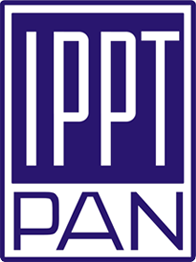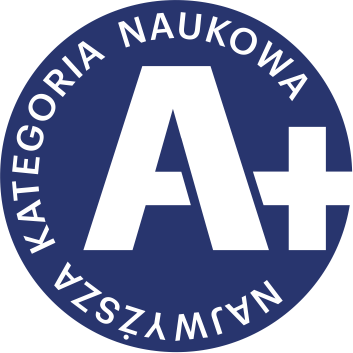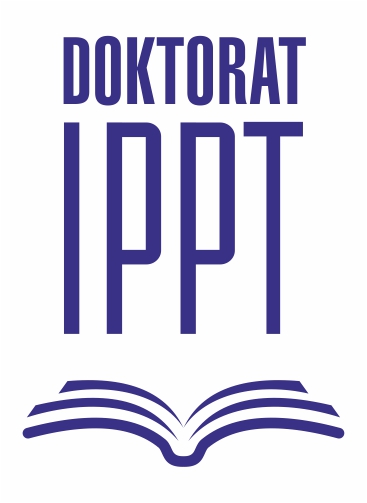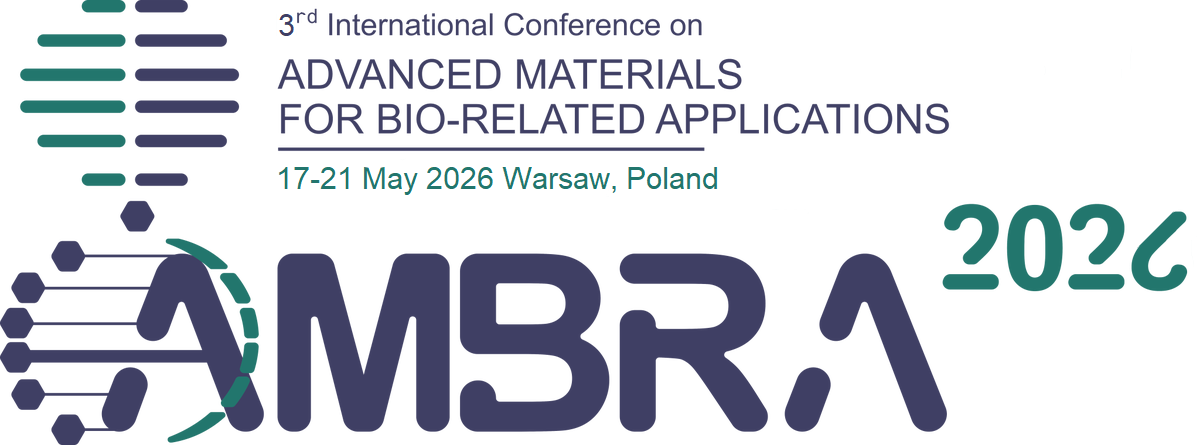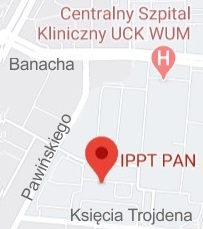| 1. |
Jasinski J. J.♦, Lubas M.♦, Stasiak T.♦, Bik M.♦, Marchewka J.♦, Mościcki T., Wilk L.♦, Nowakowska-Langier K.♦, Barlak M.♦, Frydrych K., Kurpaska L.♦, Sitarz M.♦, Jagielski J.♦, Raman spectroscopy imaging and microstructure characterisation of Ag+ implanted TiO2 hybrid layers,
Journal of molecular structure, ISSN: 0022-2860, DOI: 10.1016/j.molstruc.2025.143775, Vol.1349, No.2, pp.143775-1-143775-9, 2026 Streszczenie:
The paper presents research on Ag+ ions implanted TiO2 thin layers with Raman spectroscopy imaging. The oxide layers were formed on Ti–6Al–4 V ELI titanium alloy substrates through a multistage hybrid oxidation process, which combines fluidised bed (FB) diffusive treatment at 640 °C for 8 h with physical vapor deposition (PVD) pulse magnetron sputtering. Silver ions were implanted into the TiO2 layer after the fluidised bed process using a Metal Vapour Vacuum Arc implanter to form an interface for further PVD oxidation and generate an antibacterial interface that prevents inflammation during top layer spallation and cracking under working conditions. The ion implantation process was preceded by Monte Carlo simulations modelling of the depth profiles using SRIM-2013.00 software. The fluence of implanted ions was 1 × 1017 cm-2, and the acceleration voltage was 60 kV. The modelled range at peak damage of the real Ag+ + Ag2+ + Ag3+ + Ag4+ profile was about 40 nm. Raman spectroscopy imaging, XRD, SEM and TEM observations were carried out to evaluate the effects of ion implantation, analyse oxide phases and determine the mechanism of TiO2 layer formation during combined oxidation. The layers exhibited both amorphous and crystalline characteristics, and the top surface area was composed of TiO2 rutile and anatase, as well as oxygen vacancies (at 750 cm-1) and crystalline TiO2 (at 310 cm-1). Amorphous TiO2 dominates in the middle and near substrate layer. The layer before the substrate is composed of Ag+ ion area (ca. 100 nm) and dense TiO2 mixture of rutile (236 cm-1) and partially anatase (141 cm-1). Ultimately, it has been found that the functionalisation of oxide layers using a multistage hybrid oxidation and ion implantation process leads to a change in oxygen concentration in the various TiO2 layers forming a highly defected and active top surface layer. The homogeneous multiphase oxide layers on Ti alloys implanted with Ag+ ions for generating an antibacterial interface might improve the bioactive properties, which in perspective might be essential for biomedical applications. Słowa kluczowe:
Titanium alloys, Tio2 thin layers, Ag+ ion implantation, Rutile/anatase, Raman spectroscopy imaging Afiliacje autorów:
| Jasinski J. J. | - | inna afiliacja | | Lubas M. | - | inna afiliacja | | Stasiak T. | - | inna afiliacja | | Bik M. | - | inna afiliacja | | Marchewka J. | - | inna afiliacja | | Mościcki T. | - | IPPT PAN | | Wilk L. | - | inna afiliacja | | Nowakowska-Langier K. | - | inna afiliacja | | Barlak M. | - | inna afiliacja | | Frydrych K. | - | IPPT PAN | | Kurpaska L. | - | inna afiliacja | | Sitarz M. | - | inna afiliacja | | Jagielski J. | - | National Centre for Nuclear Research (PL) |
|  | 70p. |
| 2. |
Wojtiuk E., Maździarz M., Stasiak T.♦, Brykała M.♦, Chmielewski M.♦, Włoczewski M., Kosińska A.♦, Zielińska K., Haponova O., Jacek B.♦, Mościcki T., Theoretical and experimental mechanical properties and thermal conductivity of W-Al-B thin films deposited by magnetron sputtering,
JOURNAL OF ALLOYS AND COMPOUNDS, ISSN: 0925-8388, DOI: 10.1016/j.jallcom.2025.185222, Vol.1049, No.185222, pp.1-14, 2025 Streszczenie:
This work compares experimentally measue properties of W-Al-B thin films with mechanical properties, density, and thermal conductivity values calculated using DFT methods. Theoretical modelling was conducted to simulate two WB2 stable structures alloyed with varying amounts of aluminium: α-WB2 (P6/mmm) and ω-WB2 (P63/mmc), as well as α-AlB2 (P6/mmm). Using the HiPIMS-DC magnetron sputtering technique, films with α-WB2 structure and varying aluminium contents were deposited at 400 °C. When layers are composed with x = 1.4% aluminium (where x = at%Al / (at%Al + at%W)), their microstructure changes from amorphous to crystalline columnar. A back transformation to an amorphous microstructure occurs when the amount of aluminium exceeds x = 7.3%. An original method was used for the film density studies, which combined mass measurements and microscopic observation. These measurements were then used to determine the layers' thermal conductivity using the thermoreflectance method. The measured conductivity of the deposited ceramic films range from 3 to 6 W/(mK). Moreover, the obtained films are very hard, e.g. H = 36.1 ± 1.7 GPa for x = 1.4% Al, but exhibit a much lower Young's modulus than the theoretical values. The relatively high H/E⁎ ratio > 0.1 for films with low aluminium content indicates anmore elastic character. Ab-initio calculations showed that, based on the criteria of Cauchy pressure (C12-C44) and Pugh's ratio (B/G), the α-WB2 structure may have a ductile nature in contrast to the other structures. However, the deposited films are rather brittle in nature, resulting from an excess of boron. The fracture toughness measurements show higher KIC values for low aluminium content. They are 3.8 MPa√m for WB2, 2.8 MPa√m for x = 1.4%, and 3 MPa√m for x = 7.3% aluminium Słowa kluczowe:
thin films, high-power impulse magnetron sputtering, density, thermal conductivity, fracture toughness, stiffness tensor Afiliacje autorów:
| Wojtiuk E. | - | IPPT PAN | | Maździarz M. | - | IPPT PAN | | Stasiak T. | - | inna afiliacja | | Brykała M. | - | inna afiliacja | | Chmielewski M. | - | Institute of Electronic Materials Technology (PL) | | Włoczewski M. | - | IPPT PAN | | Kosińska A. | - | inna afiliacja | | Zielińska K. | - | IPPT PAN | | Haponova O. | - | IPPT PAN | | Jacek B. | - | inna afiliacja | | Mościcki T. | - | IPPT PAN |
|  | 100p. |
| 3. |
Rzempołuch J.♦, Stasiak T.♦, Maździarz M., Jasiński J.♦, Woy U.♦, Psiuk R., Kowal M.♦, Kosińska A.♦, Wilczopolska M.♦, Mulewska K.♦, Barlak M.♦, Ciporska K.♦, Kurpaska Ł.♦, Jagielski J.♦, Mościcki T., Characterization of He+ implanted W-Zr-B thin films deposited by HiPIMS on additively manufactured Inconel 617 as a candidate system for nuclear components,
Journal of Nuclear Materials, ISSN: 0022-3115, DOI: 10.1016/j.jnucmat.2025.156091, Vol.616, No.156091, pp.1-12, 2025 Streszczenie:
Tungsten boride alloyed with zirconium is considered a very promising material in the nuclear industry due to its shielding properties. In this paper, the resistance to helium irradiation of W-Zr-B thin films deposited on additively manufactured Inconel 617 is investigated. Two laser Directed Energy Deposition methods, a laser powder (DED-LP) and laser wire (DED-LW) were utilized for Inconel 617 substrate preparation. Preliminary studies with density functional theory (DFT) calculations were performed to determine the stability and theoretical values of structural and mechanical properties of fabricated coatings. Additionally to structural and mechanical properties, an irradiation effects after ion implantation of the layers at room temperature and 400 °C with He+ ion dose of 5 × 10¹⁷ ions/cm² and energy of 60 keV were also studied. The results show that HiPIMS is a reliable process that allows depositing dense and uniform coatings with excellent mechanical properties, comparable with DFT calculations. Scratch test results confirmed good adhesion to the surface regardless of the substrate despite low critical forces values (5.4 N and 6.6 N Lc3 values). The thickness of the deposited coatings varied from 2.40 to 2.50 µm. Nevertheless, after helium ion implantation, TEM observation shows helium voids and bubbles form at the near-surface area of the coatings. A significant decrease in hardness from initial 21.12 GPa to 6.51 GPa (LW), 7.83 GPa (LP) after room temperature and 9.40 GPa (LW), 9.71 GPa (LP) after 400 °C ion implantation, respectively is observed. The mechanism underlying this effect is also discussed in the article. Słowa kluczowe:
Tungsten borides, Hard thin films, High-power impulse magnetron sputtering, He+ ion implantation, Nanoindentation Afiliacje autorów:
| Rzempołuch J. | - | inna afiliacja | | Stasiak T. | - | inna afiliacja | | Maździarz M. | - | IPPT PAN | | Jasiński J. | - | inna afiliacja | | Woy U. | - | inna afiliacja | | Psiuk R. | - | IPPT PAN | | Kowal M. | - | inna afiliacja | | Kosińska A. | - | inna afiliacja | | Wilczopolska M. | - | inna afiliacja | | Mulewska K. | - | inna afiliacja | | Barlak M. | - | inna afiliacja | | Ciporska K. | - | inna afiliacja | | Kurpaska Ł. | - | National Centre for Nuclear Research (PL) | | Jagielski J. | - | inna afiliacja | | Mościcki T. | - | IPPT PAN |
|  | 100p. |



